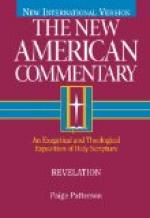The unreasonable demand that the ‘Chaldeans’ should show the dream as well as interpret it, fits the character of the king, as an imperious despot, intolerant of obstacles to his will, and holding human life very cheap. Daniel’s knowledge of the dream and of its meaning is given to him in a vision by night, which is the method of divine illumination throughout the book, and may be regarded as a lower stage thereof than the communications to prophets of ‘the word of the Lord.’
The passage falls into two parts: the image and the stone.
I. The Image.
It was a human form of strangely mingled materials, of giant size no doubt, and of majestic aspect. Barbarous enough it would have looked beside the marble lovelinesses of Greece, but it was quite like the coarser art which sought for impressiveness through size and costliness. Other people than Babylonian sculptors think that bigness is greatness, and dearness preciousness.
This image embodied what is now called a philosophy of history. It set forth the fruitful idea of a succession and unity in the rise and fall of conquerors and kingdoms. The four empires represented by it are diverse, and yet parts of a whole, and each following on the other. So the truth is taught that history is an organic whole, however unrelated its events may appear to a superficial eye. The writer of this book had learned lessons far in advance of his age, and not yet fully grasped by many so-called historians.
But, further, the human figure of the image sets forth all these kingdoms as being purely the work of men. Not that the overruling divine providence is ignored, but that the play of human passions, the lust of conquest and the like, and the use of human means, such as armies, are emphasised.
Again, the kingdoms are seen in their brilliancy, as they would naturally appear to the thoughts of a conqueror, whose highest notion of glory was earthly dominion, and who was indifferent to the suffering and blood through which he waded to a throne. When the same kingdoms are shown to Daniel in chapter vii. they are represented by beasts. Their cruelty and the destruction of life which they caused were uppermost in a prophet’s view; their vulgar splendour dazzled a king’s sleeping eyes, because it had intoxicated his waking thoughts. Much worldly glory and many of its aims appear as precious metal to dreamers, but are seen by an illuminated sight to be bestial and destructive.




